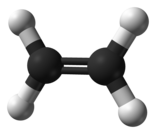
A basic concept map on topic alkene i.e. propene with its reactions and how it is prepared.
- Subject:
- Chemistry
- Material Type:
- Unit of Study
- Author:
- firdos khan
- Date Added:
- 05/23/2022

A basic concept map on topic alkene i.e. propene with its reactions and how it is prepared.

This course addresses advanced topics in structures, exterior envelopes and contemporary production technologies. It continues the exploration of structural elements and systems; expanding to include more complex determinant, indeterminate, long-span and high-rise systems. Some of the topics covered include reinforced concrete, steel and engineered wood design, and an introduction to tensile systems. The contemporary exterior envelope is discussed with an emphasis on the classification of systems, their performance attributes and advanced manufacturing technologies. This course is the second of two graduate structures courses, the first of which is 4.462. They offer an expanded version of the content presented in the undergraduate course, 4.440.

This course addresses advanced structures, exterior envelopes and contemporary production technologies. It continues the exploration of structural elements and systems, and expands to include more complex determinate, indeterminate, long-span and high-rise systems. It covers topics such as reinforced concrete, steel and engineered wood design, and provides an introduction to tensile systems. Lectures also address the contemporary exterior envelope with an emphasis on their performance attributes and advanced manufacturing technologies. This course is required of MArch students.

This course offers an introduction to the history, theory, and construction of basic structural systems as well as an introduction to energy issues in buildings. It emphasizes basic systematic and elemental behavior, principles of structural behavior, and analysis of individual structural elements and strategies for load carrying. The course also introduces fundamental energy topics including thermodynamics, psychrometrics, and comfort. It is a required class for M. Arch. students.
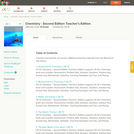
A work in progress, CK-12 Chemistry Teacher's Edition supports its Chemistry book covering: Matter; Atomic Structure; The Elements; Stoichiometry; Chemical Kinetics; Physical States of Matter; Thermodynamics; Nuclear and Organic Chemistry.
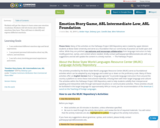
Students will get the chance to learn some new emotion vocabulary. Students will tell stories about different emotions they have. They will learn to identify and express different emotions.
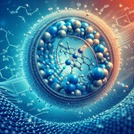
"Fluid-Solid Heterogeneous Reaction Kinetics" is an essential educational resource designed to provide students with a comprehensive understanding of reaction dynamics in solid-gas systems. This unit comprises two insightful lessons focusing on heterogeneous catalysis and the Shrinking Core Model. Through detailed exploration of reaction mechanisms, rate-determining processes, and model analysis, students gain invaluable insights into optimizing reaction conditions and enhancing catalytic efficiency. By studying fluid-particle kinetics and reaction models, learners develop critical thinking skills essential for tackling challenges in chemical engineering and industrial catalysis, paving the way for advancements in reaction engineering and sustainable process development.
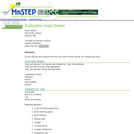
The students will investigate how one liquid will change the color of another.
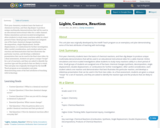
First-year chemistry students learn the basics of chemical reactions, and then dig deeper to produce unique multimedia demonstrations that will be used in an educational instructional video for a cable channel. Online simulations and microscaled investigations allow students to study many reactions safely in a short period of time. Small groups of students are assigned one of five basic chemical changes (synthesis, decomposition, single displacement, double displacement, or combustion) for further investigation. After careful consideration, each student selects one reaction and demonstration that best illustrates the particular reaction, and develops a slideshow presentation that can be used in the final class video. As a final assessment, students are given a unique "recipe" for a set of reactants, and they are asked to identify the reaction type and the products that are likely to result.
This unit plan was originally developed by the Intel® Teach program as an exemplary unit plan demonstrating some of the best attributes of teaching with technology.
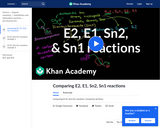
This 12-minute video lesson compares E2, E1, Sn2, and Sn1 Reactions. [Organic Chemistry playlist: Lesson 41 of 73].
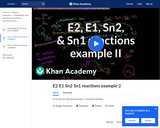
This 3-minute video lesson presents examples of E2 E1 Sn2 Sn1 reactions. [Organic Chemistry playlist: Lesson 42 of 73].
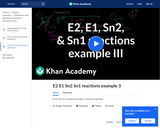
This 13-minute video lesson presents even more examples of E2 E1 Sn2 Sn1 reactions. [Organic Chemistry playlist: Lesson 43 of 73].
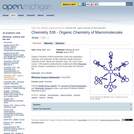
Chemistry 538 - Organic Chemistry of Macromolecules covers the preparation, reactions, and properties of high molecular weight polymeric materials of both natural and synthetic origin. As a part of this course, U-M students collaboratively created and edited÷Wikipediaarticles. Student contributions can be found below, within the "Wikipedia Articles" section.
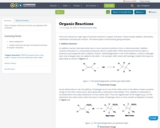
Type of organic chemical reactions are explained with examples.
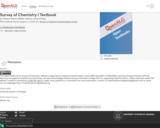
This textbook was developed as a result of a Round 12 Textbook Transformation Grant.

The basic objective of Unified Engineering is to give a solid understanding of the fundamental disciplines of aerospace engineering, as well as their interrelationships and applications. These disciplines are Materials and Structures (M); Computers and Programming (C); Fluid Mechanics (F); Thermodynamics (T); Propulsion (P); and Signals and Systems (S). In choosing to teach these subjects in a unified manner, the instructors seek to explain the common intellectual threads in these disciplines, as well as their combined application to solve engineering Systems Problems (SP). Throughout the year, the instructors emphasize the connections among the disciplines.
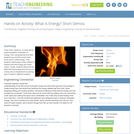
Three short, hands-on, in-class demos expand students' understand of energy. First, using peanuts and heat, students see how the human body burns food to make energy. Then, students create paper snake mobiles to explore how heat energy can cause motion. Finally, students determine the effect that heat energy from the sun (or a lamp) has on temperature by placing pans of water in different locations.

Window Notes-8th Grade Literature and Artifacts are Included